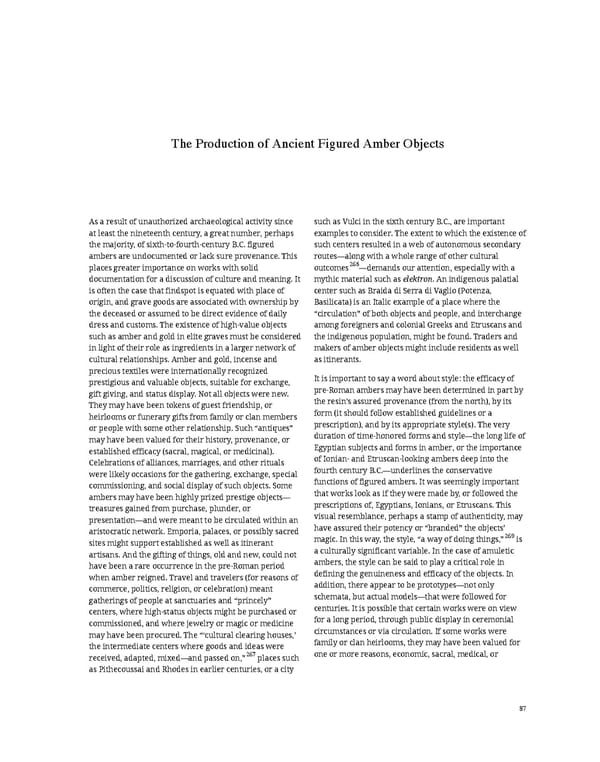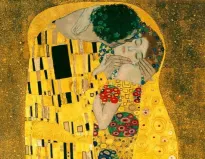The Production of Ancient Figured Amber Objects As a result of unauthorized archaeological activity since such as Vulci in the sixth century B.C., are important at least the nineteenth century, a great number, perhaps examples to consider. The extent to which the existence of the majority, of sixth-to-fourth-century B.C. figured such centers resulted in a web of autonomous secondary ambers are undocumented or lack sure provenance. This routes—along with a whole range of other cultural places greater importance on works with solid outcomes268—demands our attention, especially with a documentation for a discussion of culture and meaning. It mythic material such as elektron. An indigenous palatial is often the case that findspot is equated with place of center such as Braida di Serra di Vaglio (Potenza, origin, and grave goods are associated with ownership by Basilicata) is an Italic example of a place where the the deceased or assumed to be direct evidence of daily “circulation” of both objects and people, and interchange dress and customs. The existence of high-value objects among foreigners and colonial Greeks and Etruscans and such as amber and gold in elite graves must be considered the indigenous population, might be found. Traders and in light of their role as ingredients in a larger network of makers of amber objects might include residents as well cultural relationships. Amber and gold, incense and as itinerants. precious textiles were internationally recognized prestigious and valuable objects, suitable for exchange, It is important to say a word about style: the efficacy of gift giving, and status display. Not all objects were new. pre-Roman ambers may have been determined in part by They may have been tokens of guest friendship, or the resin’s assured provenance (from the north), by its heirlooms or funerary gifts from family or clan members form (it should follow established guidelines or a or people with some other relationship. Such “antiques” prescription), and by its appropriate style(s). The very may have been valued for their history, provenance, or duration of time-honored forms and style—the long life of established efficacy (sacral, magical, or medicinal). Egyptian subjects and forms in amber, or the importance Celebrations of alliances, marriages, and other rituals of Ionian- and Etruscan-looking ambers deep into the were likely occasions for the gathering, exchange, special fourth century B.C.—underlines the conservative commissioning, and social display of such objects. Some functions of figured ambers. It was seemingly important ambers may have been highly prized prestige objects— that works look as if they were made by, or followed the treasures gained from purchase, plunder, or prescriptions of, Egyptians, Ionians, or Etruscans. This presentation—and were meant to be circulated within an visual resemblance, perhaps a stamp of authenticity, may aristocratic network. Emporia, palaces, or possibly sacred have assured their potency or “branded” the objects’ magic. In this way, the style, “a way of doing things,”269 is sites might support established as well as itinerant artisans. And the gifting of things, old and new, could not a culturally significant variable. In the case of amuletic have been a rare occurrence in the pre-Roman period ambers, the style can be said to play a critical role in when amber reigned. Travel and travelers (for reasons of defining the genuineness and efficacy of the objects. In commerce, politics, religion, or celebration) meant addition, there appear to be prototypes—not only gatherings of people at sanctuaries and “princely” schemata, but actual models—that were followed for centers, where high-status objects might be purchased or centuries. It is possible that certain works were on view commissioned, and where jewelry or magic or medicine for a long period, through public display in ceremonial may have been procured. The “‘cultural clearing houses,’ circumstances or via circulation. If some works were the intermediate centers where goods and ideas were family or clan heirlooms, they may have been valued for received, adapted, mixed—and passed on,”267 places such one or more reasons, economic, sacral, medical, or as Pithecoussai and Rhodes in earlier centuries, or a city 87
 Ancient Carved Ambers in the J. Paul Getty Museum Page 96 Page 98
Ancient Carved Ambers in the J. Paul Getty Museum Page 96 Page 98
